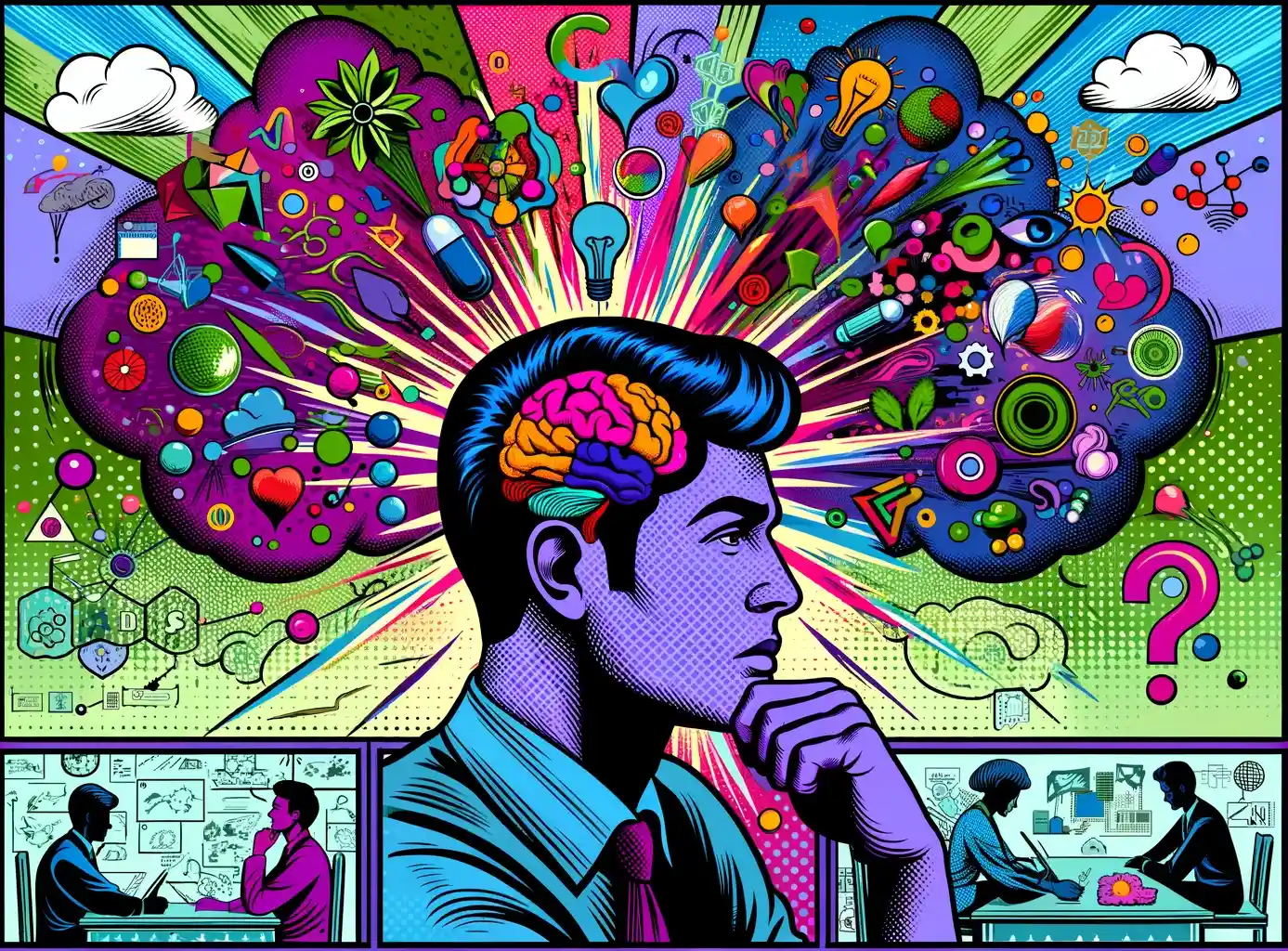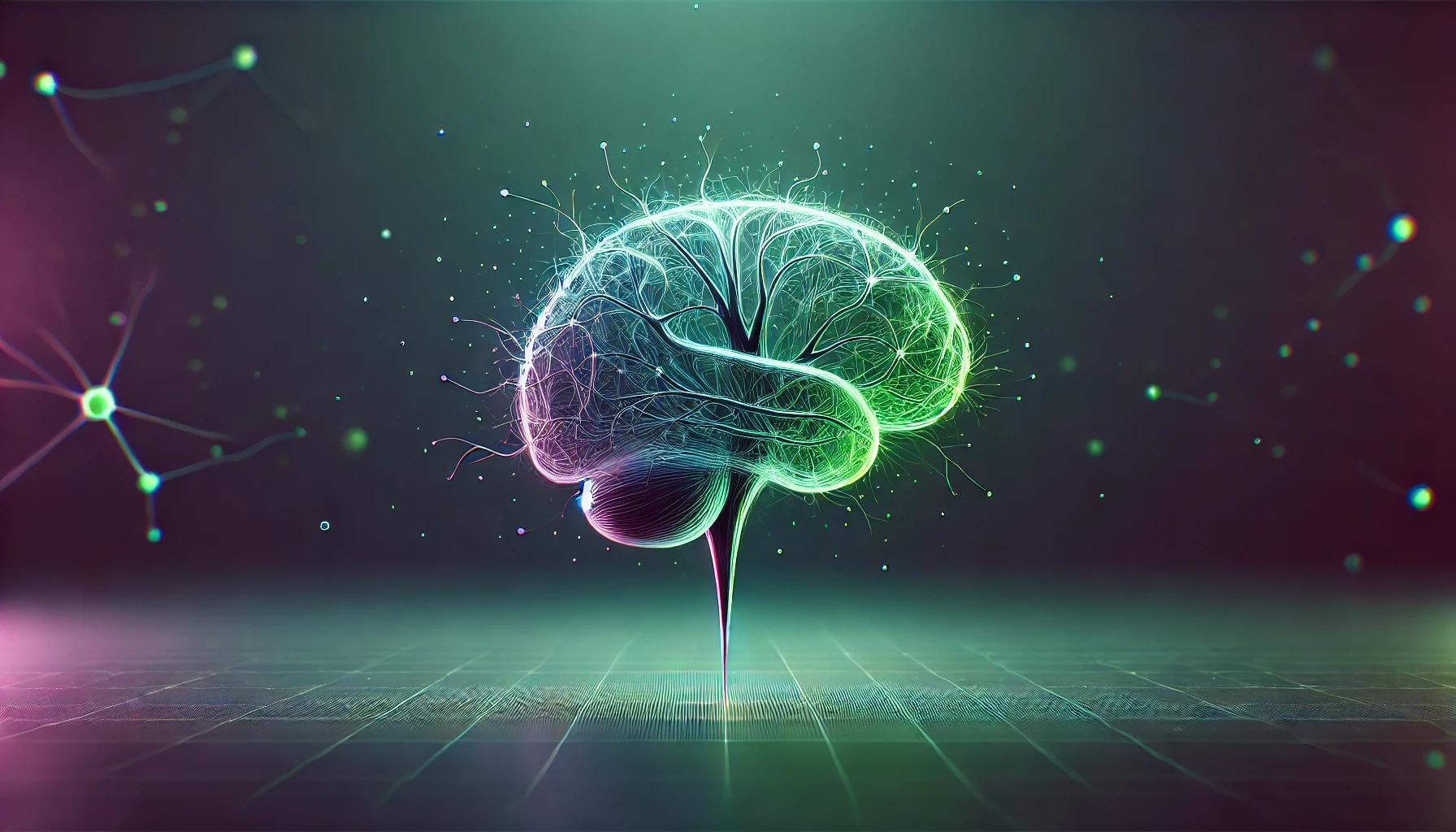Introduction to Active Learning
<p><span style="font-weight: 400;">From the earliest days of modern human existence, learning has been crucial for survival and progress. Early humans learned essential skills such as finding food, staying safe, and reducing their struggles. Traditional learning, like acquiring knowledge from others, is only the tip of the iceberg. Consider a scenario where a father caveman teaches his child how to hunt a deer. This type of direct instruction represents conventional learning.</span></p>
<p><span style="font-weight: 400;">True learning occurs when the child begins hunting. While they may use the tips shared by their ancestors, they must also improvise, make decisions, and blend their past knowledge with the current situation to create an effective strategy. During the hunt, from start to finish, hunters continuously learn about the deer's behavior and characteristics, adjusting their strategies accordingly. This ongoing process of adapting and learning in real time is what we call active learning. According to WiseWorld.ai, active learning is categorized under cognitive soft skills.</span></p>
<p><span style="font-weight: 400;">Active learning involves understanding the implications of new information for both current and future problem-solving and decision-making. It is a dynamic educational approach where learners engage actively with the material, participate in the learning process, and collaborate with others. This method emphasizes <a class='no-underline text-accent' href="wiseworld.ai/blog/critical-thinking" target="_blank">critical thinking</a>, problem-solving, and the practical application of knowledge rather than passive absorption of information.</span></p>
<p><span style="font-weight: 400;">Understanding and developing your active learning skills enhance your ability to acquire and apply new knowledge effectively, ensuring continuous growth and adaptability in an ever-changing world.</span></p>
<p><strong>Definition of Active Learning:</strong><span style="font-weight: 400;"> Active learning involves understanding the implications of new information for both current and future problem-solving and decision-making. It is a dynamic educational approach where learners engage actively with the material, participate in the learning process, and collaborate with others. This method emphasizes critical thinking, problem-solving, and the practical application of knowledge rather than passive absorption of information.</span></p>
<p><span style="font-weight: 400;">Active learning is about engaging directly with the material, applying knowledge, and adapting based on immediate feedback and changing conditions. This dynamic approach is crucial for effective problem-solving and decision-making in both current and future contexts.</span></p>
<p><strong>Importance of Active Learning in Personal and Professional Settings:</strong><span style="font-weight: 400;"> Decades ago, humans believed we would soon understand all the rules in the universe, allowing us to forecast and control situations. However, as we learned more, we realized countless other parameters influence our lives. This necessitates a <a class='no-underline text-accent' href="chrome-extension://efaidnbmnnnibpcajpcglclefindmkaj/https://pcl.sitehost.iu.edu/rgoldsto/courses/dunloskyimprovinglearning.pdf" target="_blank">shift from classic learning</a>—merely learning rules and documents and applying them—to being prepared to encounter unknown situations during our actions. The best (and only) way to perform well is to be ready to learn from the situation and apply what is needed based on our perception during our actions.</span></p>
<p><span style="font-weight: 400;">Active learning fosters a deeper understanding of subjects, enhances retention, and cultivates essential skills like critical thinking and collaboration. It encourages continuous development, adaptability, and innovative thinking in professional settings, making individuals more effective and dynamic in their roles.</span></p>Benefits of Active Learning
<p><span style="font-weight: 400;">Active learning leverages various soft skills, enhancing and empowering them in the process. Here are some key benefits:</span></p>
<p><strong>Enhances Critical Thinking:</strong><span style="font-weight: 400;"> Active learning encourages questioning, analyzing, and evaluating information, which strengthens critical thinking skills. For example, in a classroom setting where students participate in debates or solve complex problems in groups, they must critically assess the information presented and develop reasoned arguments or solutions.</span></p>
<p><strong>Improves Retention and Understanding:</strong><span style="font-weight: 400;"> Engaging actively with the material aids in better retention and understanding compared to passive listening or reading. For instance, medical students often use active learning techniques like problem-based learning (<a class='no-underline text-accent' href="https://en.wikipedia.org/wiki/Problem-based_learning" target="_blank">PBL</a>) where they work through real-life medical cases. This approach helps them retain complex medical information more effectively than traditional lecture-based learning.</span></p>
<p><strong>Increases Collaboration and Communication Skills:</strong><span style="font-weight: 400;"> Active learning frequently involves group work, discussions, and collaborative projects, enhancing teamwork and communication skills. In a corporate training program, employees might engage in team-based projects that require them to communicate effectively, share diverse perspectives, and work together to achieve common goals, thereby improving their collaborative skills.</span></p>
<p><span style="font-weight: 400;">These benefits not only improve individual competencies but also prepare learners for real-world challenges by fostering a proactive and engaged learning mindset.</span></p>Developing Active Learning
<p><span style="font-weight: 400;">Active learning, as the name suggests, requires you to be active. It involves actively analyzing any details you encounter. Here are some effective techniques to develop your active learning skills:</span></p>
<h4><strong>Learning to Embrace Curiosity and Inquiry</strong></h4>
<p><span style="font-weight: 400;">Cultivating a mindset of curiosity and a willingness to explore new ideas is crucial for active learning. Here are some strategies to foster this mindset:</span></p>
<p><strong>Ask Questions:</strong></p>
<ul>
<li style="font-weight: 400;" aria-level="2"><strong>Encourage Inquiry:</strong><span style="font-weight: 400;"> Adopt a habit of asking questions about everything you encounter. Questions drive exploration and understanding.</span></li>
<li style="font-weight: 400;" aria-level="2"><strong>Diverse Sources:</strong><span style="font-weight: 400;"> Seek answers from various sources. Don't rely solely on textbooks; explore online resources, podcasts, and expert opinions.</span></li>
<li style="font-weight: 400;" aria-level="2"><strong>Open-Ended Questions:</strong><span style="font-weight: 400;"> Focus on open-ended questions that require more than a yes or no answer. These questions often lead to deeper exploration and understanding.</span></li>
</ul>
<p><strong>Explore New Ideas:</strong></p>
<ul>
<li style="font-weight: 400;" aria-level="2"><strong>Read Widely:</strong><span style="font-weight: 400;"> Expose yourself to different genres, subjects, and viewpoints. This broadens your perspective and enhances your ability to make connections between concepts.</span></li>
<li style="font-weight: 400;" aria-level="2"><strong>Engage in Discussions:</strong><span style="font-weight: 400;"> Participate in discussions and debates. Sharing and defending your ideas encourages critical thinking and helps you understand different perspectives.</span></li>
<li style="font-weight: 400;" aria-level="2"><strong>Attend Workshops and Seminars:</strong><span style="font-weight: 400;"> Take part in events that introduce new concepts and skills. This not only provides new knowledge but also exposes you to different approaches and methodologies.</span></li>
</ul>
<h4><strong>Practicing Reflective Thinking</strong></h4>
<p><span style="font-weight: 400;">Reflective thinking involves analyzing your learning experiences to deepen understanding and identify areas for improvement. Here are some effective practices:</span></p>
<p><strong>Journaling:</strong></p>
<ul>
<li style="font-weight: 400;" aria-level="2"><strong>Daily Reflection:</strong><span style="font-weight: 400;"> Maintain a learning journal where you write about what you learned each day, your thoughts on the material, and any questions that arise.</span></li>
<li style="font-weight: 400;" aria-level="2"><strong>Critical Incidents:</strong><span style="font-weight: 400;"> Document significant learning experiences, especially those that challenge your understanding or present new insights. Reflect on why they were significant and what you learned from them.</span></li>
<li style="font-weight: 400;" aria-level="2"><strong>Action Plans:</strong><span style="font-weight: 400;"> Use your reflections to develop action plans for improvement. Identify areas where you struggled and outline steps to address these challenges.</span></li>
</ul>
<p><strong>Self-Assessment:</strong></p>
<ul>
<li style="font-weight: 400;" aria-level="2"><strong>Regular Reviews:</strong><span style="font-weight: 400;"> Periodically review your progress and assess your understanding of key concepts. Identify strengths and areas needing improvement.</span></li>
<li style="font-weight: 400;" aria-level="2"><strong>Feedback:</strong><span style="font-weight: 400;"> Seek feedback from peers, mentors, or instructors. Constructive feedback provides different perspectives on your learning and helps you identify blind spots.</span></li>
<li style="font-weight: 400;" aria-level="2"><strong>Goal Setting:</strong><span style="font-weight: 400;"> Set specific, measurable learning goals. Reflect on your progress towards these goals and adjust your strategies as needed.</span></li>
</ul>
<h3><strong>Techniques to Cultivate Active Learning</strong></h3>
<p><span style="font-weight: 400;">One of the most effective techniques for active learning was developed by the famous philosopher Socrates, known as “Socratic Questioning.” This method is based on disciplined, rigorously thoughtful dialogue. The instructor pretends to be ignorant of the topic under discussion to elicit engaged dialogue with students. Socrates believed that the disciplined practice of thoughtful questioning enables the learner to examine ideas logically and determine their validity. Known as the dialectical approach, this type of questioning can correct misconceptions and lead to reliable knowledge construction.</span></p>
<p><span style="font-weight: 400;">Despite appearing simple, “Socratic questioning” is intensely rigorous. As described in the writings of Plato, a student of Socrates, the teacher feigns ignorance about a subject to acquire the fullest possible knowledge from the other person. Individuals can recognize contradictions, so Socrates assumed that incomplete or inaccurate ideas would be corrected during the process of disciplined questioning, leading to progressively greater truth and accuracy.</span></p>
<p><strong>Encourage Deep Questioning:</strong></p>
<ul>
<li style="font-weight: 400;" aria-level="1"><span style="font-weight: 400;">After posing an initial question, follow up with additional questions to delve deeper into the responses and fully understand the subject matter.</span></li>
<li style="font-weight: 400;" aria-level="1"><span style="font-weight: 400;">Recognize that every thought is meaningful when considered within a network of related ideas. Use questioning to identify and explore this network.</span></li>
<li style="font-weight: 400;" aria-level="1"><span style="font-weight: 400;">Understand that every thought reflects an intention, need, or goal. To grasp a thoughtfully, identify the underlying intention or purpose. Ask, "What is the intention behind this thought?"</span></li>
<li style="font-weight: 400;" aria-level="1"><span style="font-weight: 400;">Acknowledge that every thought is based on information. To understand someone's thought, you must first understand the information that led to it. Ask questions like:</span></li>
<ul>
<li style="font-weight: 400;" aria-level="2"><span style="font-weight: 400;">What was their initial information?</span></li>
<li style="font-weight: 400;" aria-level="2"><span style="font-weight: 400;">What experiences do they have related to this topic?</span></li>
<li style="font-weight: 400;" aria-level="2"><span style="font-weight: 400;">How do we know if their information is accurate or unreliable?</span></li>
<li style="font-weight: 400;" aria-level="2"><span style="font-weight: 400;">How can we show them that their information might be incomplete or inadequate?</span></li>
</ul>
<li style="font-weight: 400;" aria-level="1"><span style="font-weight: 400;">Recognize that every thought leads to conclusions and meanings. Without understanding these conclusions, comprehending the thought is impossible. Ask questions like:</span></li>
<ul>
<li style="font-weight: 400;" aria-level="2"><span style="font-weight: 400;">How did we arrive at this conclusion?</span></li>
<li style="font-weight: 400;" aria-level="2"><span style="font-weight: 400;">What reasons do we have?</span></li>
<li style="font-weight: 400;" aria-level="2"><span style="font-weight: 400;">Is there an alternative explanation for this interpretation?</span></li>
</ul>
</ul>
<p><span style="font-weight: 400;">By employing these techniques, you can enhance your ability to engage in active learning, leading to a deeper understanding of subjects, improved problem-solving skills, and better decision-making in both personal and professional contexts.</span></p>Training to Improve Active Learning
<p><span style="font-weight: 400;">To improve your active learning, it's essential to engage actively in various learning activities. Here are some methods to enhance your active learning skills. If you have other suggestions, please share them in the comments so everyone can benefit.</span></p>
<h4><strong>Continuous Learning and Cognitive Abilities</strong></h4>
<p><span style="font-weight: 400;">We all possess unique cognitive abilities, which can be enhanced through continuous learning. Cognitive scientists highlight the importance of functions like working memory and attention:</span></p>
<ul>
<li style="font-weight: 400;" aria-level="1"><strong>Working Memory:</strong><span style="font-weight: 400;"> This is like the mental workspace where we temporarily hold and manipulate information needed for our current tasks. Typically, humans can manage about 7±2 items in their <a class='no-underline text-accent' href="https://en.wikipedia.org/wiki/The_Magical_Number_Seven,_Plus_or_Minus_Two" target="_blank">working memory</a>. It’s distinct from short-term or long-term memory as it deals with information we are actively processing.</span></li>
<li style="font-weight: 400;" aria-level="1"><strong>Attention:</strong><span style="font-weight: 400;"> This involves focusing on specific information (<a class='no-underline text-accent' href="https://study.com/learn/lesson/selective-attention-theory-examples.html#:~:text=is%20Selective%20Attention%3F-,What%20is%20selective%20attention%3F,directed%20attention%2C%20or%20executive%20attention." target="_blank">selective attention</a>) and maintaining concentration over time (<a class='no-underline text-accent' href="https://www.frontiersin.org/journals/human-neuroscience/articles/10.3389/fnhum.2017.00388/full" target="_blank">sustained attention</a>). These functions are crucial for filtering out irrelevant information and honing in on what's important, allowing us to process and learn new information effectively.</span></li>
</ul>
<p><span style="font-weight: 400;">Improving these cognitive functions is crucial for better active learning. Here are some strategies to enhance them:</span></p>
<ul>
<li style="font-weight: 400;" aria-level="1"><strong>Practice Mindfulness and Meditation:</strong><span style="font-weight: 400;"> These techniques can improve your attention span and help you manage distractions effectively.</span></li>
<li style="font-weight: 400;" aria-level="1"><strong>Engage in Brain Training Exercises:</strong><span style="font-weight: 400;"> Activities like puzzles, memory games, and strategy games can strengthen your working memory.</span></li>
<li style="font-weight: 400;" aria-level="1"><strong>Stay Physically Active:</strong><span style="font-weight: 400;"> Regular physical exercise has been shown to enhance cognitive functions, including working memory and attention.</span></li>
</ul>
<h4><strong>Role-Playing Exercises to Simulate Real-World Scenarios</strong></h4>
<p><span style="font-weight: 400;"><a class='no-underline text-accent' href="https://en.wikipedia.org/wiki/Role-playing_game" target="_blank">Role-playing</a> exercises are an excellent way to develop your active learning skills by simulating real-world scenarios. Here are some suggestions:</span></p>
<ul>
<li style="font-weight: 400;" aria-level="1"><strong>Mock Interviews and Presentations:</strong><span style="font-weight: 400;"> Practice interviews or presentations with peers to improve your ability to think on your feet and respond to unexpected questions or situations.</span></li>
<li style="font-weight: 400;" aria-level="1"><strong>Case Studies and Problem-Solving Sessions:</strong><span style="font-weight: 400;"> Work through case studies or real-life problems relevant to your field. This helps you apply theoretical knowledge to practical situations.</span></li>
<li style="font-weight: 400;" aria-level="1"><strong>Team Projects:</strong><span style="font-weight: 400;"> Collaborate with others on projects that require you to research, plan, and execute tasks collectively. This enhances your ability to learn from others and adapt to new information.</span></li>
</ul>
<p><span style="font-weight: 400;">By engaging in these activities, you can develop and refine the cognitive functions necessary for active learning. Remember, the key to active learning is to remain curious, reflective, and engaged in the learning process.</span></p>Active Learning in Work Scenarios
<p><span style="font-weight: 400;">Consider a few years ago, specifically before the emergence of social media tools like Facebook in 2004 and Twitter in 2006. How has our life changed since then? Change is a constant reality in our modern world. Every second, new services, tools, and products are announced, promising to make our lives easier and more efficient. Understanding what we need and choosing the best tools for it embodies the spirit of active learning. Let's discuss some work scenarios where this soft skill is crucial:</span></p>
<h4><strong>Applying Active Learning in Educational and L&D Settings</strong></h4>
<p><span style="font-weight: 400;">Education extends beyond traditional educational institutions. Today, <a class='no-underline text-accent' href="https://www.devlinpeck.com/content/employee-training-statistics" target="_blank">94% of enterprises have internal educational programs to empower their employees</a>. The challenge is to engage employees in active learning rather than passive listening or, worse, checking their social media during training sessions.</span></p>
<p><span style="font-weight: 400;">Using active learning techniques such as flipped classrooms, peer teaching, and interactive role-plays can enhance engagement and learning outcomes. Additionally, incorporating board or mobile games that simulate real-life events can train and assess users engagingly. This method helps attendees gain experience in a controlled environment, which can be significantly less costly than real-life mistakes. This embodies the principle of learning by doing, which is one of the most effective ways to teach skills.</span></p>
<p><span style="font-weight: 400;">Companies, particularly their learning and development departments, should implement executive projects that allow employees to apply what they’ve learned in real-world scenarios. Hackathons at companies like Spotify and Facebook are excellent examples of active learning environments in corporate settings.</span></p>
<h4><strong>Handling Workplace Challenges with Active Learning</strong></h4>
<p><span style="font-weight: 400;">In any system or process, weak points are inevitable. There are two ways to address them:</span></p>
<ol>
<li style="font-weight: 400;" aria-level="1"><span style="font-weight: 400;">The easy and hopeful way: Ignore them until they become critical.</span></li>
<li style="font-weight: 400;" aria-level="1"><span style="font-weight: 400;">The tough and instructive way: Continuously search for and improve weak points to optimize the process.</span></li>
</ol>
<p><span style="font-weight: 400;">Depending on your team’s DNA and culture, your approach to active learning will vary. If you wait until problems become critical, you’re reacting to issues as they arise, often with limited insight into underlying causes. However, an active learner constantly seeks minor inefficiencies, devising and implementing better solutions based on experience, facts, and resources.</span></p>
<p><span style="font-weight: 400;">Active learning encourages collaborative problem-solving, brainstorming sessions, and continuous feedback loops, which are essential for addressing workplace challenges proactively and effectively.</span></p>
<h4><strong>Working Effectively in Team Collaborations Using Active Learning</strong></h4>
<p><span style="font-weight: 400;">A team’s strength and collaboration culture is truly tested when problems arise. As the saying goes, "A smooth sea never made a skilled sailor." Encouraging a culture of active learning helps teams focus on solutions rather than assigning blame.</span></p>
<p><span style="font-weight: 400;">When a problem occurs, a team with an active learning culture looks at what happened and what can be learned from it. This approach aligns with the famous quote by George Santayana: “Those who cannot remember the past are condemned to repeat it.” Santayana was a philosopher, essayist, poet, and novelist known for his contributions to aesthetics, speculative philosophy, and literary criticism.</span></p>
<p><span style="font-weight: 400;">Incorporating active learning strategies in team settings improves communication, fosters innovation, and ensures all team members are engaged and contributing. By reflecting on past experiences and applying learned lessons, teams can continuously improve and adapt to new challenges effectively.</span></p>
<p><span style="font-weight: 400;">This approach is why many large companies do not immediately fire employees who make mistakes. Instead, they view these employees as valuable resources who have learned crucial lessons. A real-life example of this is when the Ford Motor Company retained an executive who made a $10 million mistake. Henry Ford believed that the experience made the executive more valuable to the company.</span></p>
<p><span style="font-weight: 400;">By fostering an environment that encourages active learning, companies can transform challenges into opportunities for growth and innovation.</span></p>Overcoming Barriers to Active Learning: The Dunning-Kruger Effect and Beyond
<p><span style="font-weight: 400;">From the earliest days of human existence, learning has been crucial for survival and progress. Our ancestors learned essential skills like finding food and staying safe, which were foundational to human development. However, true learning goes beyond just acquiring knowledge; it involves active engagement and continuous adaptation.</span></p>
<h4><strong>Understanding the Dunning-Kruger Effect</strong></h4>
<p><span style="font-weight: 400;">The Dunning-Kruger effect is a cognitive bias where individuals with low ability at a task overestimate their ability. This phenomenon was identified in a 1999 study by David Dunning and Justin Kruger. They found that individuals with limited knowledge or skills in certain areas often rated their competence much higher than it was. For example, participants who scored in the 12th percentile on tests of humor, grammar, and logic estimated their abilities to be in the 62nd percentile.</span></p>
<h4><strong>Causes and Implications</strong></h4>
<p><span style="font-weight: 400;">This effect occurs because those with limited knowledge lack the self-awareness to recognize their deficiencies. High confidence in one's abilities, even when unfounded, is often rewarded socially, leading people to overestimate their competence. This overconfidence can be particularly problematic in professional and personal settings, where accurate self-assessment is crucial for growth and improvement.</span></p>
<h4><strong>Overcoming the Dunning-Kruger Effect</strong></h4>
<ol>
<li style="font-weight: 400;" aria-level="1"><strong>Continuous Self-Assessment</strong><span style="font-weight: 400;">: Regularly evaluate your skills and knowledge objectively. Seek feedback from others to gain different perspectives.</span></li>
</ol>
<p><span style="font-weight: 400;">Ray Dalio, the founder of Bridgewater Associates, emphasizes the importance of seeking honest feedback and continuous self-assessment in his book "Principles: Life and Work". He built a culture of radical transparency and meritocracy, encouraging employees to provide and receive honest feedback.</span></p>
<ol>
<li style="font-weight: 400;" aria-level="1"><strong>Seek Constructive Criticism</strong><span style="font-weight: 400;">: Engage with experts and peers who can provide honest and constructive feedback on your performance. Constructive criticism is vital for growth and improvement as it highlights areas that need work and offers suggestions for enhancement.</span></li>
</ol>
<p><span style="font-weight: 400;">Jack Ma, the founder of Alibaba. Ma has often spoken about the importance of listening to criticism. He believes that feedback, especially negative feedback, is a valuable tool for improvement. By actively seeking out and considering the perspectives of others, Ma was able to build Alibaba into a global e-commerce giant.</span></p>
<ol>
<li style="font-weight: 400;" aria-level="1"><strong>Embrace Lifelong Learning</strong><span style="font-weight: 400;">: Commit to ongoing education and skill development. Recognize that learning is a continuous journey, not a one-time event.</span></li>
</ol>
<p><span style="font-weight: 400;">Warren Buffett, one of the most successful investors in the world, spends about 80% of his day reading. He believes in continuous learning and improving one's knowledge base over time.</span></p>
<h3><strong>Additional Strategies for Enhancing Active Learning</strong></h3>
<ul>
<li style="font-weight: 400;" aria-level="1"><strong>Addressing Resistance to Change</strong><span style="font-weight: 400;">: Accepting that we may not always be right can be challenging, as it threatens our sense of control. However, acknowledging this reality is the first step to overcoming it. Remind yourself of the benefits of active learning, such as improved problem-solving skills and better decision-making. Overcome resistance by demonstrating these benefits and providing support during the transition. Use success stories and data to highlight the effectiveness of active learning. </span><strong>Kodak</strong><span style="font-weight: 400;">'s resistance to digital photography is a classic example of failure to embrace change. Conversely, companies like <a class='no-underline text-accent' href="https://www.cascade.app/studies/how-ibm-became-a-multinational-giant-through-multiple-business-transformations" target="_blank">IBM successfully pivoted</a> from hardware to services by embracing change and continuously learning.</span></li>
<li style="font-weight: 400;" aria-level="1"><strong>Managing Time Constraints</strong><span style="font-weight: 400;">: Revising and reflecting on our actions often leads to better outcomes. However, time constraints frequently hinder this process. Effective time management techniques can help integrate active learning into busy schedules. Prioritize activities that offer the most significant learning impact. As the saying goes, "Time is the most valuable thing a man can spend" (Theophrastus). Use the </span><strong><a class='no-underline text-accent' href="https://en.wikipedia.org/wiki/Pareto_principle" target="_blank">Pareto Principle</a> (80/20 rule)</strong><span style="font-weight: 400;"> to focus on the 20% of tasks that produce 80% of the results. This helps manage time effectively, allowing room for reflective practices and active learning.</span></li>
</ul>
<p><strong>Building a Supportive Learning Environment</strong><span style="font-weight: 400;">:</span></p>
<p><span style="font-weight: 400;">An insightful quote by Helen Keller: "Alone we can do so little; together we can do so much." shows us the way to success. Supportive environments significantly contribute to success. Create a culture that values continuous learning and supports experimentation. Encourage open dialogue, collaboration, and shared learning experiences. Supportive environments help mitigate anxiety, confirmation bias, and other detrimental attitudes, fostering a culture of growth and improvement.</span></p>
<ul>
<li style="font-weight: 400;" aria-level="1"><strong>Pixar Animation Studios</strong><span style="font-weight: 400;"> is renowned for its supportive learning environment. They hold regular "<a class='no-underline text-accent' href="https://pixar.fandom.com/wiki/Brain_Trust" target="_blank">Braintrust</a>" meetings where directors present their work-in-progress and receive candid feedback from their peers. This collaborative and supportive approach has led to the creation of many successful films.</span></li>
</ul>
<p><span style="font-weight: 400;">Overcoming barriers to active learning, such as the Dunning-Kruger effect, requires continuous self-assessment, seeking constructive criticism, and embracing lifelong learning. Addressing resistance to change, managing time constraints, and building supportive learning environments are additional strategies that enhance active learning. Remember, active learning is a journey that demands curiosity, reflection, and adaptability.</span></p>Real-Life Examples of Active Learning
<p><span style="font-weight: 400;">Let's explore how individuals and enterprises have thrived through active learning.</span></p>
<h4><strong>Analogies for Human Beings on How to Be Active Learners</strong></h4>
<h4><span style="font-weight: 400;">Active learning is a crucial skill for continuous growth and adaptability. To illustrate how active learning can be effectively implemented, we can draw analogies from the fields of artificial intelligence and natural adaptation. These examples provide valuable insights into how humans can approach learning in dynamic and ever-changing environments.</span></h4>
<ul>
<li style="font-weight: 400;" aria-level="1"><strong>Artificial Intelligence (AI) and Machine Learning: </strong><span style="font-weight: 400;">One of the most compelling examples of active learning is found in the field of artificial intelligence (AI), specifically through machine learning. Machine learning algorithms actively learn from vast amounts of data, identifying patterns and making predictions. Companies like Google and Facebook use these algorithms to enhance user experiences, personalize content, and improve service delivery. For instance, Google’s AI continually learns from user interactions to refine search results, making it more intuitive and effective over time. This relentless pursuit of improvement and adaptation mirrors the active learning process in humans.</span></li>
<li style="font-weight: 400;" aria-level="1"><strong>Natural Adaptation in Viruses:</strong><span style="font-weight: 400;"> In nature, viruses exemplify active learning through their ability to adapt to new environments. A virus, such as the influenza virus, constantly mutates, learning from each host it infects to become more resilient. This continuous adaptation is why it’s challenging to develop a one-size-fits-all vaccine, as the virus learns and changes its structure to evade the immune system. This natural form of active learning demonstrates the power and necessity of adaptability for survival. Just as viruses adapt to survive, humans must continuously learn and adapt to thrive in an ever-changing world.</span></li>
</ul>
<h4><strong>Stories of Teams or Individuals Thriving Through Active Learning</strong></h4>
<ul>
<li style="font-weight: 400;" aria-level="1"><strong>The Agile Development Team at Spotify:</strong><span style="font-weight: 400;"> Spotify's engineering teams are a prime example of active learning in action. They use an agile methodology that emphasizes continuous learning and adaptation. Teams regularly conduct retrospectives where they reflect on what worked well and what didn’t during their development sprints. This constant feedback loop allows them to quickly adapt to new challenges and improve their processes. For example, <a class='no-underline text-accent' href="https://www.techaheadcorp.com/blog/decoding-software-architecture-of-spotify-how-microservices-empowers-spotify/" target="_blank">Spotify’s shift</a> from a monolithic architecture to a microservices-based architecture is a well-documented case of agile transformation. The insights gained through continuous retrospectives and feedback sessions led to the realization that a monolithic system was limiting its scalability and speed of innovation. By breaking down their system into smaller, manageable microservices, Spotify was able to enhance system scalability, improve reliability, and accelerate the development and deployment of new features. This approach not only facilitated more efficient development cycles but also allowed teams to experiment and learn from each iteration, embodying the principles of active learning. Spotify's "Squad" model further reinforces this active learning environment. Squads are small, cross-functional teams that operate like mini-startups within the company. Each squad is empowered to make decisions and iterate on their work autonomously, fostering a culture of continuous learning and innovation. This structure ensures that learning is integrated into daily workflows, making the organization more adaptable and resilient.</span></li>
<li style="font-weight: 400;" aria-level="1"><strong>Rita Pierson's Educational Approach:</strong><span style="font-weight: 400;"><a class='no-underline text-accent' href="https://www.youtube.com/watch?v=SFnMTHhKdkw" target="_blank"> Rita Pierson</a>, a renowned educator, advocated for active learning in the classroom. She believed that students learn best when they are engaged and feel connected to the material. Pierson implemented active learning techniques such as group discussions, interactive lessons, and real-time feedback to keep her students involved. Her approach not only improved academic outcomes but also fostered a love for learning among her students. Pierson’s methods demonstrated that active learning could transform educational experiences and outcomes, making learning more dynamic and impactful.</span></li>
<li style="font-weight: 400;" aria-level="1"><strong>The Michelin Guide:</strong><span style="font-weight: 400;"> A fascinating example of an esteemed publication by the French tire company Michelin, which is known for its restaurant and hotel ratings. <a class='no-underline text-accent' href="https://guide.michelin.com/us/en/article/features/everything-you-want-to-know-about-the-michelin-guide-inspectors" target="_blank">Michelin inspectors</a>, who are culinary experts, use active learning to continually refine their assessment skills. Inspectors visit numerous restaurants and experience a wide range of cuisines. They then discuss and analyze their experiences in detail, learning from each other’s perspectives and feedback. This process helps them develop a more nuanced understanding of culinary excellence, ensuring that the Michelin Guide remains a trusted and respected resource in the gastronomic world.</span></li>
</ul>
<p><span style="font-weight: 400;">By looking at these examples, it's clear that active learning is not just a theoretical concept but a practical approach that drives success and innovation across various fields.</span></p>Complementary Soft Skill: Critical Thinking
<h4><span style="font-weight: 400;">Definition and Importance: <a class='no-underline text-accent' href="https://www.wiseworld.ai/blog/critical-thinking" target="_blank">Critical thinking</a> is the ability to analyze facts, generate and organize ideas, defend opinions, make comparisons, draw inferences, evaluate arguments, and solve problems. It involves rational, skeptical, unbiased analysis, or evaluation of factual evidence. Critical thinking is essential because it enables individuals to make reasoned judgments that are logical and well-thought-out. It involves thinking in a disciplined way, using skills such as analysis, synthesis, and evaluation, which are crucial for academic success and practical decision-making in everyday life.</span></h4>
<h4><strong>How Critical Thinking Complements Active Learning:</strong></h4>
<h4><span style="font-weight: 400;">Critical thinking complements active learning by providing the analytical skills necessary to evaluate and interpret new information effectively. Active learning involves engaging with new material, participating in discussions, and applying knowledge practically, all of which require a strong foundation in critical thinking to ensure the information is understood, processed, and used effectively. When learners engage actively, they must critically assess the validity of information, recognize biases, and construct well-supported arguments. This interplay between active engagement and critical evaluation enhances both learning processes, leading to deeper understanding and better problem-solving abilities.</span></h4>
<h4><span style="font-weight: 400;">Strategies to Develop Critical Thinking Alongside Active Learning:</span></h4>
<h4><strong>Engage in Socratic Questioning:</strong><span style="font-weight: 400;"> Encourage deep questioning to explore ideas thoroughly. This involves asking open-ended questions that promote discussion and critical thinking. For example, during a study session, rather than just accepting information at face value, question the underlying assumptions, explore alternative viewpoints, and evaluate the evidence supporting various claims.</span></h4>
<h4><strong>Participate in Reflective Practices:</strong><span style="font-weight: 400;"> Engage in reflective practices such as journaling about learning experiences. Reflect on what you have learned, how you learned it, and how you can apply it in different contexts. Reflective thinking helps identify areas for improvement and reinforces the learning process.</span></h4>
<h4><strong>Practice Problem-Solving Exercises:</strong><span style="font-weight: 400;"> Regularly engage in exercises that require solving complex problems. This could involve case studies, simulations, or real-world scenarios that require critical evaluation and decision-making. For example, in a business class, analyze a company's strategic decision, evaluate its outcomes, and suggest alternative strategies.</span></h4>
<h4><strong>Collaborate with Peers:</strong><span style="font-weight: 400;"> Collaboration encourages the exchange of diverse perspectives, which can enhance critical thinking. Engage in group discussions, peer reviews, and team projects where you critically assess each other's ideas and provide constructive feedback.</span></h4>
<h4><strong>Use Mind Mapping Techniques:</strong><span style="font-weight: 400;"> Mind mapping helps organize thoughts and ideas visually. It can be a powerful tool for critical thinking, allowing learners to see the connections between different pieces of information, identify gaps in their knowledge, and develop a deeper understanding of the subject matter.</span></h4>
<h4><strong>Analyze Real-Life Case Studies:</strong><span style="font-weight: 400;"> Apply critical thinking skills to analyze real-life case studies in various fields. For example, in a healthcare setting, critically assess patient case studies to identify the best course of action based on evidence and clinical guidelines.</span></h4>
<h4><strong>Encourage Continuous Learning:</strong><span style="font-weight: 400;"> Promote a culture of lifelong learning where individuals are encouraged to continuously seek new knowledge and skills. This ongoing process helps maintain and develop critical thinking abilities over time.</span></h4>
<h4><span style="font-weight: 400;">These strategies help individuals develop strong critical thinking skills that enhance their active learning capabilities, leading to more effective and meaningful learning experiences.</span></h4>In a Nutshell
<p><span style="font-weight: 400;">Thanks for reading till now, or even just choosing to see the gist of it first, as we discussed Active learning is a dynamic educational approach emphasizing direct engagement, critical thinking, and real-time adaptation. It goes beyond traditional learning by involving learners in actively applying knowledge and collaborating with others.</span></p>
<p><strong>Importance:</strong><span style="font-weight: 400;"> This approach fosters deeper understanding, better retention, and essential skills like critical thinking and teamwork. It is crucial for both personal growth and professional effectiveness.</span></p>
<p><strong>Developing Active Learning Skills:</strong><span style="font-weight: 400;"> Techniques include cultivating curiosity, asking open-ended questions, engaging in discussions, and reflective practices like journaling and self-assessment.</span></p>
<p><strong>Benefits:</strong><span style="font-weight: 400;"> Active learning enhances critical thinking, improves retention, and boosts collaboration and communication skills.</span></p>
<p><strong>Implementation:</strong><span style="font-weight: 400;"> It is applied in various scenarios such as education, corporate training, and team collaborations. Techniques like Socratic questioning and role-playing exercises simulate real-world scenarios and help develop these skills.</span></p>
<p><strong>Overcoming Barriers:</strong><span style="font-weight: 400;"> Addressing issues like the Dunning-Kruger effect, managing time constraints, and building supportive environments are essential for effective active learning.</span></p>
<p><strong>Examples:</strong><span style="font-weight: 400;"> Case studies from AI and natural adaptation in viruses to agile development teams and the Michelin Guide demonstrate the practical success of active learning.</span></p>
<p><strong>Complementary Skill: </strong><span style="font-weight: 400;">Critical thinking complements active learning by providing the analytical skills necessary to evaluate and interpret new information effectively.</span></p>
<p><span style="font-weight: 400;">By embracing active learning, individuals can adapt, innovate, and thrive in an ever-changing environment.</span></p>Resources for Further Reading and Development
<p><span style="font-weight: 400;">The book I found helpful was "Make It Stick: The Science of Successful Learning" by Peter C. Brown, Henry L. Roediger III, and Mark A. McDaniel. You may</span><a class='no-underline text-accent' href="https://books.google.nl/books?id=oneWAwAAQBAJ&printsec=frontcover&dq=Make+It+Stick:+The+Science+of+Successful+Learning%22+by+Peter+C.+Brown&hl=en&newbks=1&newbks_redir=0&sa=X&ved=2ahUKEwjo77zPyOKGAxUkr5UCHcBVDy4Q6AF6BAgEEAI#v=onepage&q=Make%20It%20Stick%3A%20The%20Science%20of%20Successful%20Learning%22%20by%20Peter%20C.%20Brown&f=false"><span style="font-weight: 400;"> find it here</span></a><span style="font-weight: 400;">. </span></p>
<p><span style="font-weight: 400;">For continuous learning, you should find better platforms that use modern technologies like AI assistance and gamified platforms, one of them is WiseWorld.ai which helps you to assess and train your Active learning and other soft skills. </span></p>











